3. PACKAGES
3.1 PCASYS - Fingerprint Pattern Classification
Automatic fingerprint classification is a subject of interest to developers of an Automated
Fingerprint Identification System(AFIS). In an AFIS system, there is a database of file
fingerprint cards, against which incoming search cards must be efficiently matched.
Automatic matchers now exist that compare fingerprints based on their
patterns of ridge endings and bifurcations(the minutiae). However,
if the file is very large, then exhaustive matching of search fingerprints
against file fingerprints may require so much computation as to be
impractical. In such a case, the efficiency of the matching process may
be greatly increased by partitioning the file based on classification
of fingerprints. Once the class foreach fingerprint of the searchcard
has been determined, these tof possible matching filecards can be
restricted to those whose 10-tuple(one foreach finger) of classes
matches that of the searchcard. This reduces the number of comparisons
that must be performed by the minutiae-matcher. Some fingerprint
identification systems use manual classification followed by
automatic minutiae matching; the standard Henry classification system,
or a modification or extension of it,
is often used. The handbook[36] provides a complete description of a
manual classification system. Automating the classification process
would improve its speed and cost-effectiveness. However, producing
an accurate automatic fingerprint classifier has proved to be a very
difficult task. The object of there search leading to
PCASYS is to build a prototype classifier that separates fingerprints
into basic pattern-level classes known as arch, leftloop, rightloop,
scar,
tented arch, and whorl. Figure2 shows example fingerprints of the
several classes. The system performs these steps: image segmentation
and enhancement; feature extraction, registration,and
dimensionality reduction; running of a main classifier, either a
Probabilistic or Multi-Layer Perceptron NeuralNetwork and an
auxiliary whorl-detector that traces and analyzes pseudo- ridges;
and finally, creation of a hypothesized class and confidence level.
PCASYS is a prototype/demonstration pattern-level fingerprint
classification program. It is provided in the form of a sourcecode
distribution and is intended to run on a desktop
workstation. The program reads and classifies each of a set of fingerprint
imagefiles, optionally displaying the results of several processing
stages in graphical form. This distribution contains
2700 fingerprint images that may be used to demonstrate the classifier;
it can also be run on user-provided images.
The basic method used by the PCASYS fingerprint classifier consists of,
first, extracting from the fingerprint to be classified
an array(a two-dimensional grid in this case) of the local orientations
of the fingerprint's ridges and valleys. Second, comparing that
orientation array with similar arrays made from prototype fingerprints
ahead of time. The comparisons are actually performed
between low-dimensional feature vectors made from the
orientation arrays, rather than using the arrays directly, but that can
be thought of as an implementation detail.
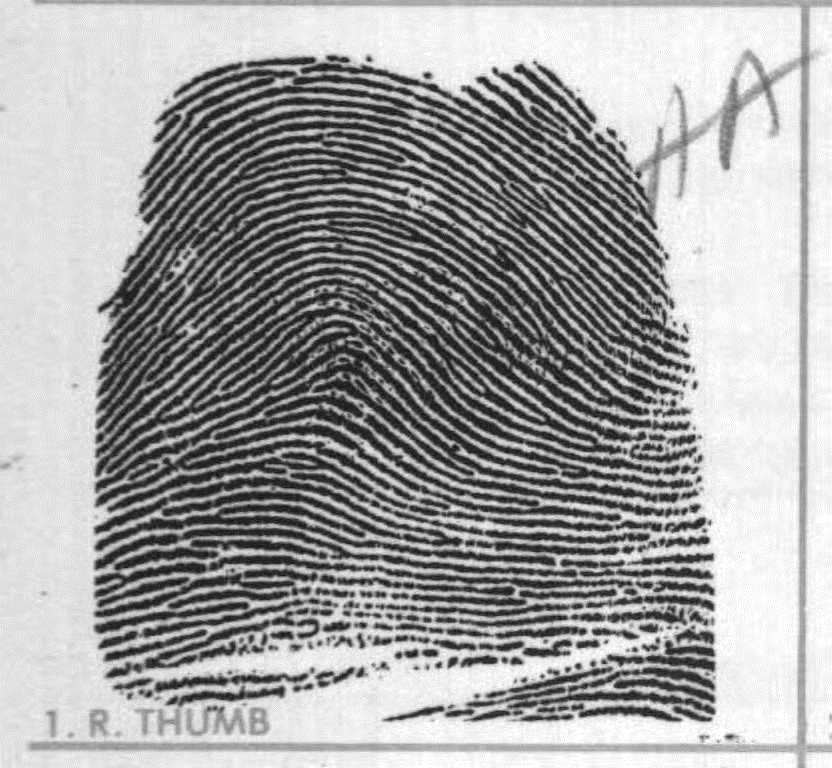



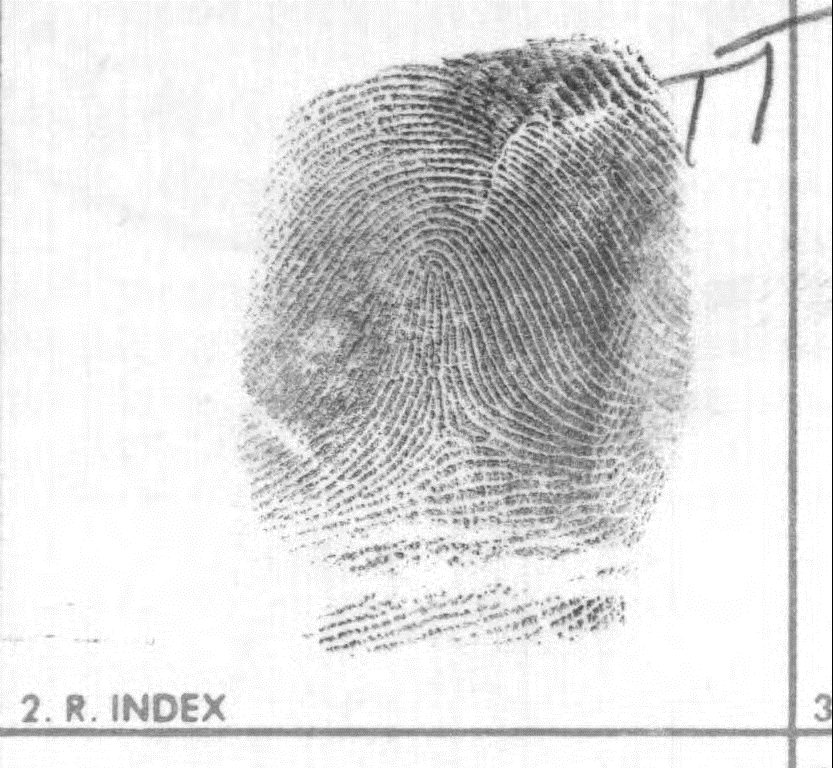

Figure 2. Example fingerprints of the six pattern-level
classes. Going left-right, top-bottom, arch [A],
left loop [L], right loop [R], scar [S],
tented arch [T], and whorl [W].
These are NIST Special Database 14 images
s0024501.wsq, s0024310.wsq, s0024304.wsq, s0026117.wsq,
s0024372.wsq, and s002351.wsq, and they are among the
fingerprint images included on the CD-ROM in test/pcasys/data/images.
Orientation arrays or matrices like the ones used in PCASYS were
produced in early fingerprint work at Rockwell, CALSPAN, and Printrak.
The detection of localridge slopes came about naturally as a side effect
of binarization algorithms that were used to preprocess scanned
fingerprint images in preparation for minutiae detection. Early
experiments in automatic fingerprint classification using these
orientation matrices were done by Rockwell, improved upon by Printrak,
and work was done at NIST(formerly NBS). Wegstein, of NBS, produced the
R92 registration algorithm that isused by PCASYS and did important
early automatic classification experiments.[8]
The algorithms used in PCASYS are described further in Section4.1
and in References[17] and [22]-[24].
3.2 MINDTCT - Minutiae Detection
Another software system
provided in this distribution is a minutiae detection package called,
MINDTCT. This section first describes what fingerprint minutiae are,
and then some background is provided as to why this package was developed
for the FBI.
3.2.1 Definition of Minutiae
Traditionally,two fingerprints
have been compared using discrete features called minutiae. These
features include points in a finger's frictionskin
where ridges end(called a ridgeending)
or split(called a ridge bifurcation). Typically, there are on the
order of 100 to 200 minutiae on a tenprint. In order to search and match
fingerprints, the coordinate location and the orientation of
the ridge at each minutia point are recorded. Figure3 shows an example
of the two types of minutiae. The minutiae are marked in the right image,
and the tails on the markers point in the
direction of the minutia's orientation.


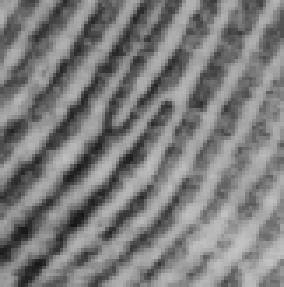

Figure 3. Minutiae: bifurcation (square marker) and ridge
ending (circle marker).
The location of each minutia is represented by a coordinate location
within the fingerprint's image. Different AFIS systems represent this
location differently. The ANSI/NIST standard specifies units of
distance in terms of 0.01mm from an origin in the bottomleft corner of
the image. For example, a 500OE600 pixel image scanned at 19.69ppmm has
dimensions 25.39OE30.47mm which in standard units of 0.01mm is
01.069.19 600 01.069.19 50030472539
***=*
Thus, the pixel coordinate(200,192) will be represented in standard units at
( ) \Delta \Theta \Lambda \Xi \Pi \Sigma *--*= 01.069.19 19213047,01.069.19 2002071,1016
where the Y-coordinate is measured from the bottom of the image upward.
The orientation of the minutiae is represented in degrees, with
zero degrees pointing horizontal and to the right, and increasing
degrees proceeding counter-clockwise. The orientation of a ridge
ending is determined by measuring the angle between the horizontal axis
and the line starting at the minutiapoint and running through the middle
of the ridge. The orientation of a bifurcation is determined by
measuring the angle between the horizontal axis and the line starting
at the minutia point and running through the middle of the intervening
valley between the bifurcating ridges. The minutiae plotted in
Figure4 illustrate the line to which the angle of orientation is
measured. Each minutia symbol is comprised of a circle or square,
marking the location of the minutia
point, and the line or tail proceeding from the circle or square is
projected along either the ridge ending's ridge,
or the bifurcation's valley. The angle of orientation as specified by
the ANSI/NIST standard is marked as angle X in the illustration.
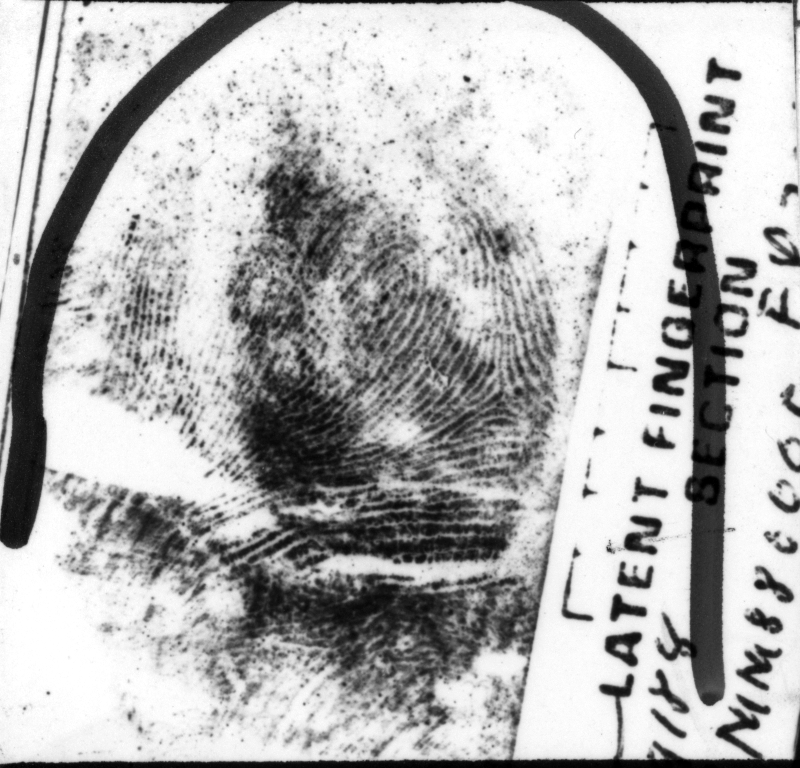
Figure 4. Minutiae orientation. A. standard angle, B. FBI/IAFIS angle A B AB
3.2.2 Latent Fingerprints
In addition to tenprints, there is a
smaller population of fingerprints also important to the FBI. These are
fingerprints captured at crime scenes that can
be used as evidence in solving criminal
cases. Unlike tenprints, which have been captured in a relatively
controlled environment for the expressed purpose of identification,
crimescene fingerprints are by nature incidentally left behind.
They are often invisible to the eye without some type of
chemical processing or dusting. It is for this reason that they have been
traditionally called latent fingerprints.
As one would expect, the composition and quality of
latent fingerprints are significantly different from tenprints.
Typically, only a portion of the finger is present in the latent,
the surface on which the latent was imprinted is unpredictable,
and the clarity of frictionskin details are often blurred or occluded.
All this leads to fingerprints of significantly
lesser quality than typical tenprints. While there are 100 to 200
minutiae on a tenprint, there maybe only a dozen on a latent.
Figure5 shows a "good" quality latent on the left and its matching
tenprint on the right.

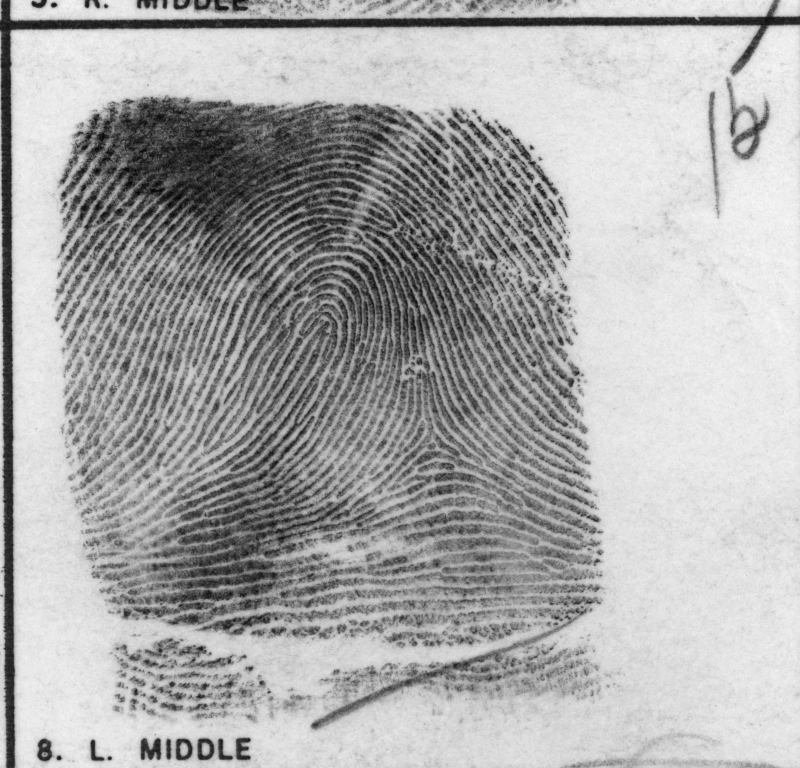
Figure 5. Latent fingerprint (left) with matching tenprint (right).
Due to the poor conditions of latent fingerprints, today's AFIS
technology operates poorly when presented a latent fingerprint image.
It is extremely difficult for the automated system to
accurately classify latent fingerprints and reliably locate the
minutiae in the image. Consequently, human fingerprint experts,
called latent examiners, must analyze and manually markup each latent
fingerprint in preparation for matching. This is a tedious and
labor intensive task.
To support the processing of latent fingerprints, the FBI and NIST
collaboratively developed a specialized workstation called
the Universal Latent Workstation(ULW). This workstation has
been designed to aid the latent examiner in preparing a latent
fingerprint for search. In addition, the workstation provides
for interoperability between different AFIS systems by functioning
as a vendor-independent front-end interface. These two aspects of the
ULW contribute significantly to the advancement of
the state-of-the-art in latent fingerprint identification
and law enforcement
in general. As such, the FBI has chosen to distribute the ULW freely upon
request. To receive more in formation regarding ULW, please contact:
Tom Hopper(thopper@leo.com)
FBI,JEHBldg.
CJISDiv/Rm11192E935PAAve.,NW Washington,DC
20537-9700
202-324-3506
The successful application of the ULW is primarily facilitated by its
use of the ANSI/NIST-ITL1-2000 standard. NIST also developed some its
underlying core technology, including the minutiae detection package
in this software distribution. MINDTCT takes a fingerprint image and
locates all minutiae in the image, assigning to each minutia point its
location, orientation, type, and quality. The command, mindtct,
reads a fingerprint image from an ANSI/NIST file, detects the minutiae
in the image, encodes the results into a Type-9 minutiae record[30],
combines the record with the input data, and writes it all out to a new
ANSI/NISTfile.
An algorithmic description of MINDTCT is provided in Section4.2.
3.3 AN2K - Standard Reference Implementation
The AN2K package is a reference implementation of
the ANSI/NIST-ITL 1-2000 standard. [30] This package contains
utilities for reading, writing, and manipulating the contents
of ANSI/NIST
datafiles. These files are comprised of a sequence of data fields and
image records. Sourcecode is provided to parse ANSI/NIST files into
memory, manipulate designated fields, and write the sequence
back to file. The utility an2ktool does this in batchmode.
Logical dataunits are referenced on the commandline,
and the specified contents may be printed, inserted, substituted,
or deleted from the file. Alternatively, two other utilities are
provided to support interactive editing of the contents of
an ANSI/NIST file. The command
an2k2txt converts the textual content of an ANSI/NIST file in to a
formatted textreport, and any binarydata(including images) are
stored to temporary files
and externally referenced in the textreport. In this way,
the textreport can then be loaded in to any common text editor and ASCII
information can be added, deleted, or changed. When all edits are
complete, the command txt2an2k is run on the edited version
of the textreport, externally referenced binary data files are
incorporated, and a new ANSI/NIST file is written.
One of the many types of records in an ANSI/NIST file is the Type-9 record
designed to hold minutiae data for fingerprint matching.
Currently there is no global consensus on how fingerprint minutiae
should be numerically represented. Different fingerprint systems
use different sets of attributes and representation schemes.
To manage this, the fields of the Type-9 record have been divided
into blocks, where each block is assigned to a registered vendor,
and the vendor defines how he will represen this minutiae data.
In the standard, the first 4 fields of the Type-9 record are mandatory
and must always be filled. Fields 5 through 12 are fields in the standard
defined by NIST to hold among other things,
the fingerprint's core, delta, and minutiae
locations, along with neighbors and intervening ridge counts.
The FBI's IAFIS is assigned fields 13 through 23. The definition of these
fields is specified in the FBI's Electronic Fingerprint
Transmission Specification(EFTS), Reference[37].
Unfortunately, these two blocks of fields are different. Two utilities
are provided in the AN2K package to facilitate the conversion between
these blocks of fields in a Type-9 record. The
command an2k2iaf translates the minutiae data stored in
NIST fields 5-12 into the FBI/IAFIS fields 13-23. The command
iaf2an2k reverses the process. An XWindows ANSI/NIST file image
previewer is included in the package. The utility
dpyan2k is designed to parse an ANSI/NIST file, locating and
displaying each image in the file to a separate window. In
addition, if any minutiae are included in a corresponding Type-9
record, then the minutia points are plotted on top of the fingerprint image.
3.4 IMGTOOLS - General Purpose Image Utilities
NIST has
distributed several fingerprint databases [14], [18]-[20] over the
past decade for use in evaluating fingerprint matching systems.
The images in these databases are formatted as NIST
IHead [14],[18] files using either Lossless JPEG or WSQ compression.
The IHead format uses a 296 byte header to store basic information about
the image(i.e. pixelwidth, height, depth,
compressiontype, compressedlength, etc.). Displaying these
images is problematic as common image viewing utilities do not
support this format. Using utilities in the
IMGTOOLS package, users are able to take NIST legacy database
files and convert them into standard compliant
formats, including Baseline JPEG which is widely supported.
Another issue is that these legacy files are not standard compliant.
The utility sd_rfmt takes a legacy database file and reformats it.
For example, legacy IHead WSQ files are converted so
that they can be decoded with an FBI compliant WSQ decoder. The command
dwsq14 decompresses fingerprint images distributed with NIST Special
Database14, while the command djpeglsd decompresses images
distributed with NIST Special Database4,9,10,&18.[25]
IMGTOOLS also contains a collection of standard compliant and
certifiable image encoders and decoders. The utilities
cjpegb and djpegb encode and decode Baseline JPEG files respectively.
The utilities cjpegl and djpegl encode and decode Lossless JPEG files.
This represents one of the only publicly available implementations
of the standard LosslessJPEG
algorithm. Finally, theutilities cwsq and dwsq encode and
decode FBI WSQ files. An XWindow application,
dpyimage, is provided to view these different file compression
formats, including IHead images and rawpixmaps.
Users should exercise caution when using these encoders and decoders in
succession. The decoders generate uncompressed, reconstructed
imagepixmaps that can be subsequently re- encoded.
Both Baseline JPEG and WSQ are lossy compression schemes,
so taking their decoded pixmaps and re-encoding them may produce
undesirable results. The amount of image degradation caused by lossy
compression can be analyzed using the utility diffbyts to compare the
pixels in an original image to those returned by one of the decoders.
All three compression algorithms in this distribution support
internal comment blocks. Applications typically need easy access to
various image attributes. These attributes include
generic statistics such as pixel width, height, depth, and
scan resolution, but often it is desirable to store and
retrieve application-specific information such as fingerprint type,
mugshot pose, or age/sex of the individual. To support applications,
a structure called a NISTCOM has been defined, containing
a text-based attribute list of(name,value)pairs. The encoders in
IMGTOOLS accept an optional NISTCOM file, and if provided,
embed its contents into a comment block
within the encoded bytestream. The decoders on the other hand,
search the encoded by testream for the presence of a
NISTCOM, and if found, merge its contents with those attributes
the decoder derives itself and writes the resulting attribute
list to a separate text file with extension "ncm"
For more information on the NISTCOM convention, please refer to
the Reference Manual in AppendixB. A NISTCOM stored in a JPEG or WSQ file
does not interfere with other standard compliant decoders because
it is contained in a standard comment block.
Several commands are provided to support NISTCOM and comment
blocks in general. The utilities
rdjpgcom and wrjpgcom read and write comments
blocks to and from both Baseline and Lossless JPEG files. Similarly,
rdwsqcom and wrwsqcom read and write comment blocks to and from WSQ files.
Two other capabilities are included in IMGTOOLS. The first handles the
interleaving and non-interleaving of color
components in an image. The command
intr2not takes an interleaved color image and separates
the components into individual planes, whereas the command
not2intr reverses the process. These condcapability
handles converting between RGB and YCbCr colorspaces. The command
rgb2ycc converts from RGB to YCbCr, and ycc2rgb reverses the process.













